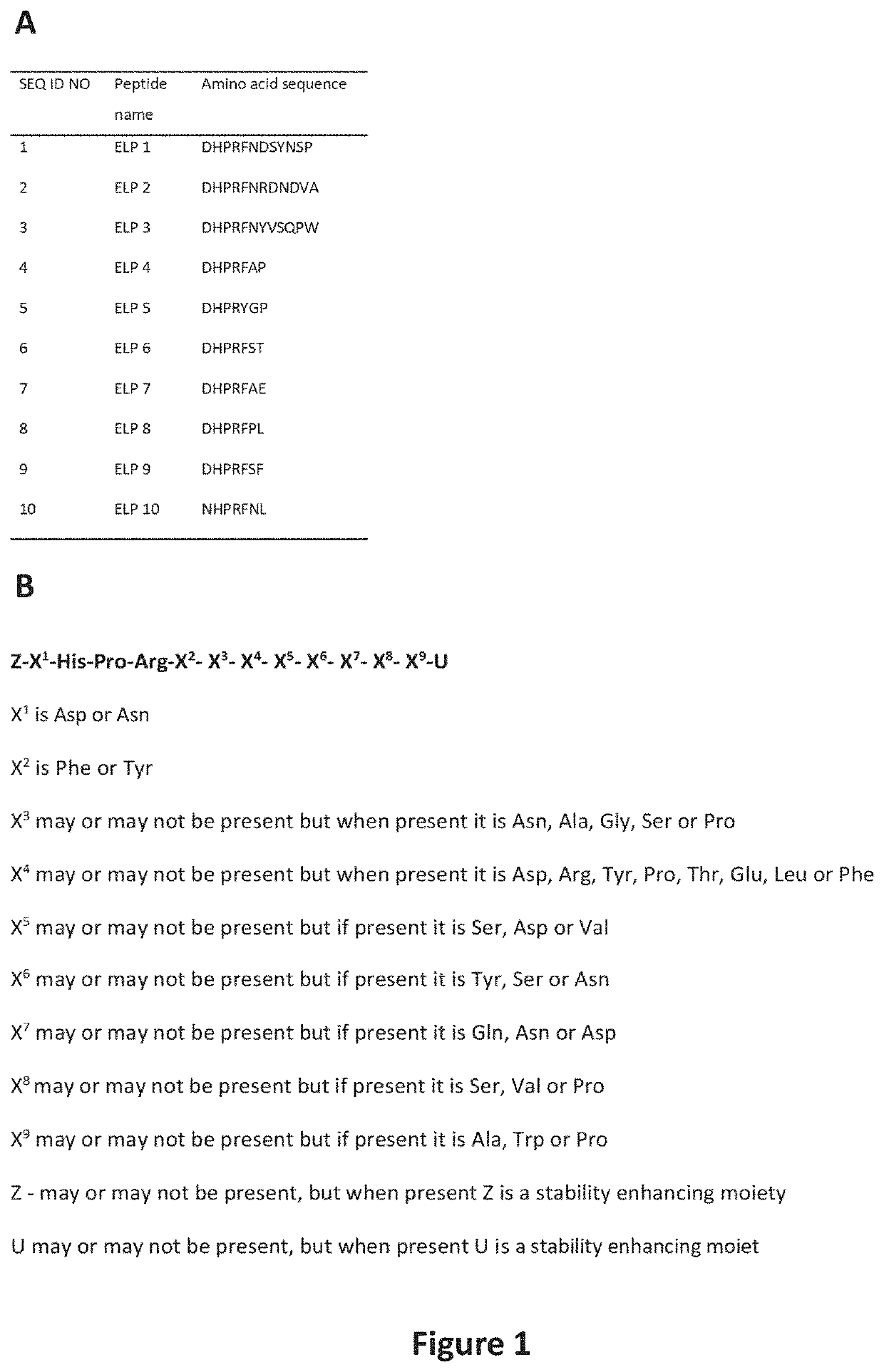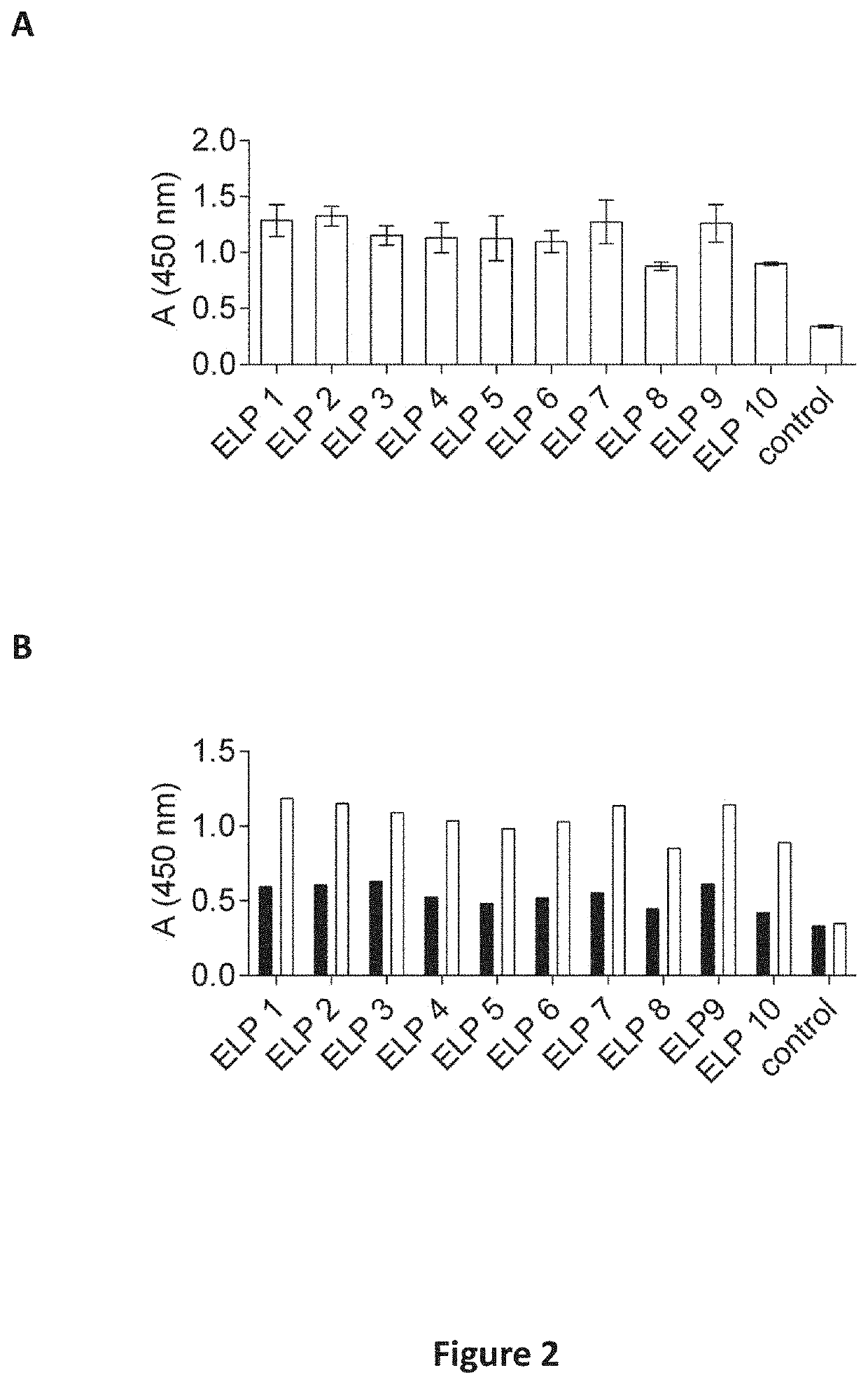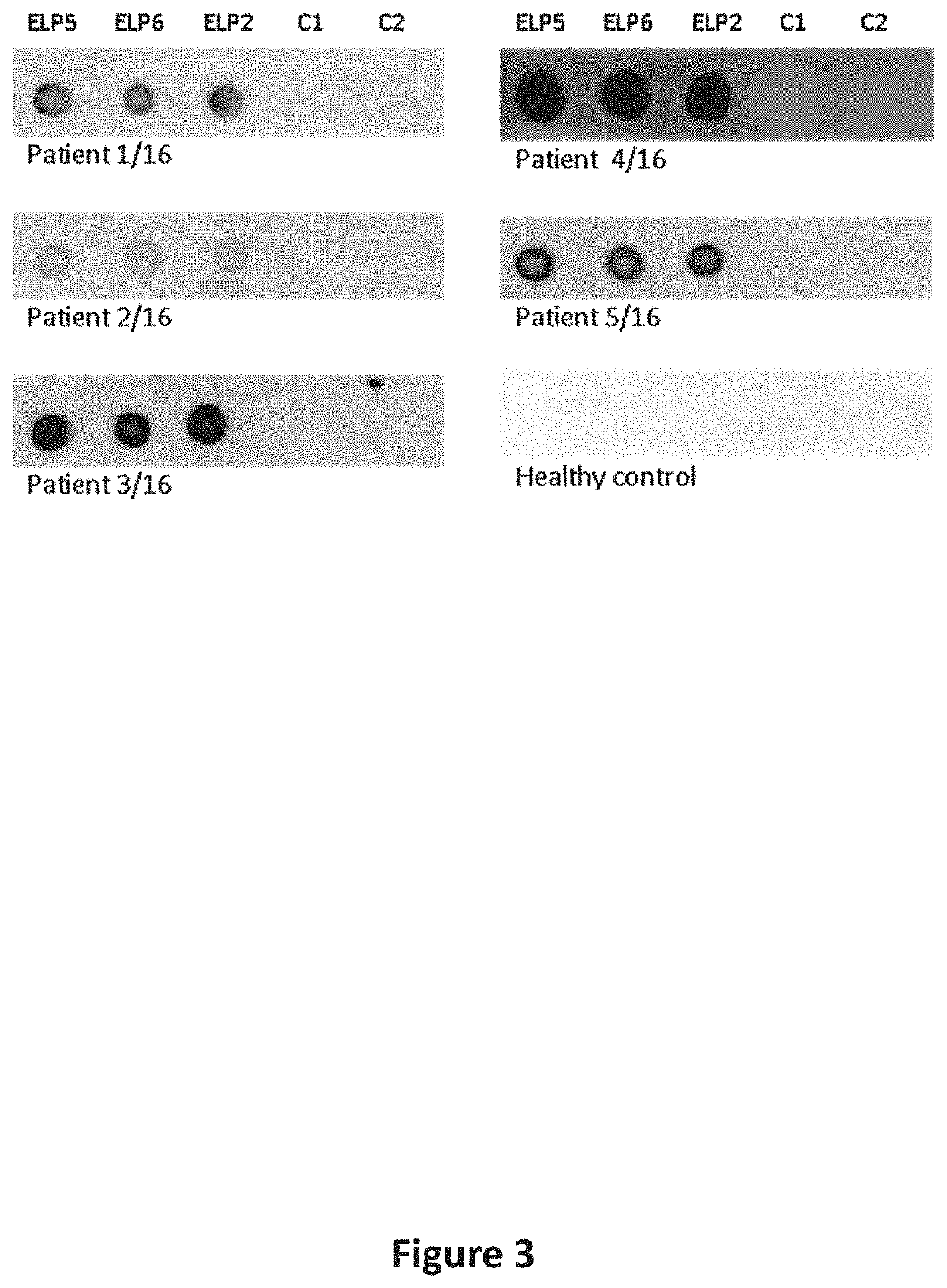Ige epitope-like peptides and uses thereof
a technology of epitope-like peptides and peptides, which is applied in the field of epitope-like peptides, can solve the problems of limiting its applicability, difficult standardization, and risk of systemic adverse events including anaphylaxis, and achieve the effects of preventing cross-linking, preventing degranulation and secretion
- Summary
- Abstract
- Description
- Claims
- Application Information
AI Technical Summary
Benefits of technology
Problems solved by technology
Method used
Image
Examples
example 1
[0228]IgE Epitope-Like Peptides
[0229]Affinity-purified rabbit IgG specific to Ara h 2 was immobilized onto protein G or protein A coupled to Dynabeads (Thermo Fisher Scientific), incubated in 0.5% BSA (Sigma-Aldrich, St. Louis, Mo., USA) in PBST for 30 min and used as a target in biopanning. Linear dodecamer, linear heptamer and cyclic heptamer random peptide phage libraries (New England Biolabs, Ipswich, Mass., USA) were screened according to the manufacturer's instructions. Briefly, 1011 plaque forming units were incubated with 15 μL of immobilized Dynabeads for 1 h at room temperature. Unbound phages were washed with PBST. Bound phages were eluted either specifically with Ara h 2 or non-specifically with 0.1 M glycine buffer with pH 2.2 and amplified in the Escherichia coli K12 ER2738 to be used in the next rounds of biopanning. After the third round, E. coli were infected with the eluted phages and grown on LB plates containing 5-bromo-4-chloro-3-indolyl-β-D-galactopyranoside an...
example 2
[0230]Binding of the IgE Epitope-Like Peptides to Anti Ara h 2 Rabbit Antiserum
[0231]Individual IgE epitope-like peptides expressed as fusion proteins with pill protein on the surface of filamentous phage were evaluated for their binding to anti Ara h 2 rabbit antiserum (INDOOR Biotechnologies, Charlottesville, Va., USA) in duplicates with ELISA. The wells of the microtiter plates were coated overnight at 4° C. with Ara h 2 rabbit antiserum diluted to 1:1000 in 0.1 M NaHCO3 (pH 8.6). The wells were blocked with 5% skim milk in PBS and washed with PBST. Next, 100 μL equal amount (5×1010 pfu / well) of phages was added and incubated for 1 h at room temperature. For detection, mice anti-M13 monoclonal antibodies conjugated with HRP (GE Healthcare, Little Chalfont, UK) diluted to 1:5000 were incubated for 1 h at room temperature and the TMB Super Tracker (ImmunoO4) with added 0.006% H202 was used as a substrate. The reaction was terminated with 2 M H2SO4, and the absorbance was measured a...
example 3
[0233]Binding of IgE Epitope-Like Peptides to IgE of Peanut Allergic Patients
[0234]Three selected IgE epitope-like peptides (ELP 2, ELP 5, ELP 6) were extracted as recombinant fusions with bacteriophage minor coat protein pIII from the periplasm of host bacteria with osmotic shock. Two target-unrelated control peptides also fused to protein pIII (binders to streptavidin and human leptin) were extracted in the same way and served as negative controls (C1, C2). Briefly, E. coli host bacteria were infected with individual phage clones and grown for 2 hours at 37° C. with agitation. Bacteria pellets were spun down at 5000×g for 10 min and resuspended in 1 ml of an ice-cold solution consisting of 20% sucrose, 200 mM Tris-HCl pH 8.0 and 1 mM EDTA supplemented with protease inhibitor cocktail (EZBlock™, BioVision, San Francisco, USA) at a dilution of 1:200. After 1 h incubation on ice with occasional stirring supernatants were harvested by centrifugation at 12000×g for 20 minutes at 4° C. ...
PUM
| Property | Measurement | Unit |
|---|---|---|
| structure | aaaaa | aaaaa |
| hydrophobic | aaaaa | aaaaa |
| polar | aaaaa | aaaaa |
Abstract
Description
Claims
Application Information
 Login to View More
Login to View More - R&D
- Intellectual Property
- Life Sciences
- Materials
- Tech Scout
- Unparalleled Data Quality
- Higher Quality Content
- 60% Fewer Hallucinations
Browse by: Latest US Patents, China's latest patents, Technical Efficacy Thesaurus, Application Domain, Technology Topic, Popular Technical Reports.
© 2025 PatSnap. All rights reserved.Legal|Privacy policy|Modern Slavery Act Transparency Statement|Sitemap|About US| Contact US: help@patsnap.com



